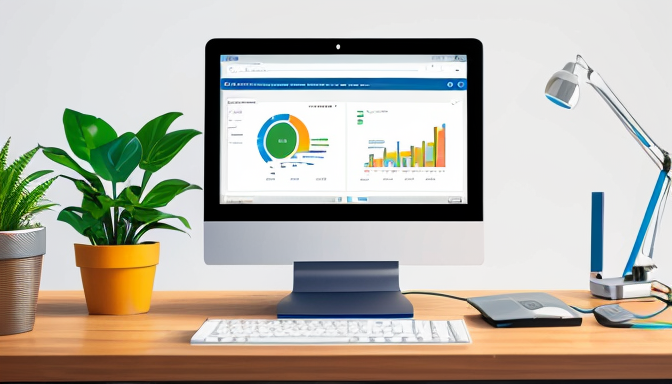When it comes to web development, Joomla stands out as a powerful content management system that many overlook. But what makes it truly special? Let’s dive into the hidden gems of its architecture! At the core of Joomla’s structure are its key elements: components, modules, plugins, and templates. Each plays a pivotal role in creating a seamless user experience.
First, let’s talk about components. Think of them as the building blocks of your website; they handle the heavy lifting. Each component is responsible for a specific piece of functionality. For instance, if you want to manage articles, the com_content component is your go-to. Next up are modules, which are like the icing on the cake. They allow you to display content in various positions on your site, giving you flexibility and control over layout.
Then we have plugins, the unsung heroes that extend Joomla’s capabilities. They can modify data before it’s displayed or even add new features on the fly. Finally, templates are the visual face of your site, allowing for customization without altering the core functionality. By using the MVC pattern (Model-View-Controller), Joomla ensures a clear separation of logic, making development more efficient and maintainable.
In a nutshell, understanding these structural elements not only enhances your development process but also elevates the performance of your Joomla sites. So, are you ready to unlock the full potential of Joomla and create something extraordinary?
Understanding Joomla’s Framework
When you think of Joomla, it’s easy to get lost in the sea of features and functionalities. But let’s take a step back and dive into the structural elements that make Joomla a powerhouse in web development. At the heart of Joomla lies the MVC (Model-View-Controller) architecture, a design pattern that separates the application logic from the user interface. This separation allows developers to work on different aspects of a site simultaneously, enhancing efficiency and performance.
Now, let’s break down the core components that work together in harmony:
- Components: These are the main building blocks of Joomla. Think of them as the engines that drive your website’s functionality. Each component has its own set of features and is responsible for a specific task, like managing articles or handling user interactions.
- Modules: If components are the engines, modules are the accessories. They provide additional features and content display options, allowing you to customize your website’s appearance and functionality without heavy coding.
- Plugins: These are the behind-the-scenes helpers. Plugins can trigger actions at specific events, like when a user logs in or when content is saved, adding layers of functionality without cluttering your main components.
- Templates: Think of templates as the skin of your website. They dictate how your site looks and feels, allowing for creative freedom in design while ensuring that the underlying functionality remains intact.
Understanding these elements is crucial for any developer looking to harness the full power of Joomla. By leveraging the MVC pattern alongside components, modules, plugins, and templates, you can create a website that’s not only visually appealing but also highly functional and efficient. So, are you ready to explore the limitless possibilities Joomla has to offer?

Extending Joomla’s Capabilities
When it comes to , the platform truly shines with its robust architecture. At the heart of Joomla are its structural elements—components, modules, plugins, and templates—each playing a pivotal role in crafting a unique web experience. Think of components as the main engines of your website; they handle the heavy lifting, managing content and functionality. For instance, a component might be responsible for a blog or an e-commerce store, allowing for rich, interactive experiences.
Modules, on the other hand, are like the icing on the cake. They offer additional features and can be positioned in various areas of your site, enhancing its appearance and functionality. Want to show a login form or a popular articles list? That’s where modules come into play, giving you flexibility without the need for extensive coding.
Plugins add another layer of functionality, acting as the glue that connects various components and modules. They enable features like SEO enhancements, social media sharing, and more, making your site not just functional but also dynamic. And let’s not forget about templates, which are the visual framework, defining how your site looks and feels. With thousands of templates available, customizing your site’s design is as easy as pie.
All these elements work seamlessly together thanks to Joomla’s MVC architecture (Model-View-Controller), which separates the logic of the application from the presentation. This separation not only enhances performance but also makes it easier for developers to maintain and scale their projects. In essence, Joomla provides a powerful toolkit that can be tailored to meet diverse needs, ensuring that every website is as unique as its creator.
Frequently Asked Questions
- What is Joomla’s MVC architecture?
Joomla’s MVC (Model-View-Controller) architecture is like the backbone of your website. It separates the data (Model), the user interface (View), and the logic (Controller), making it easier for developers to manage and update their sites efficiently. Think of it as a well-organized toolbox where each tool has its own place!
- How can I extend Joomla’s functionality?
You can extend Joomla’s capabilities through various extensions, like plugins, components, and modules. These are like adding extra toppings to your favorite pizza—each one enhances the overall flavor! Whether you need a contact form or an SEO tool, there’s likely an extension that fits your needs.
- Is Joomla suitable for beginners?
Absolutely! While it has powerful features for advanced users, Joomla is also user-friendly for beginners. It’s like learning to ride a bike; you might wobble at first, but with a little practice, you’ll be cruising in no time!
- Can I customize my Joomla site?
Yes, you can customize your Joomla site extensively! With templates and styles, you can give your website a personal touch, making it uniquely yours. It’s like decorating your room—make it reflect your personality!